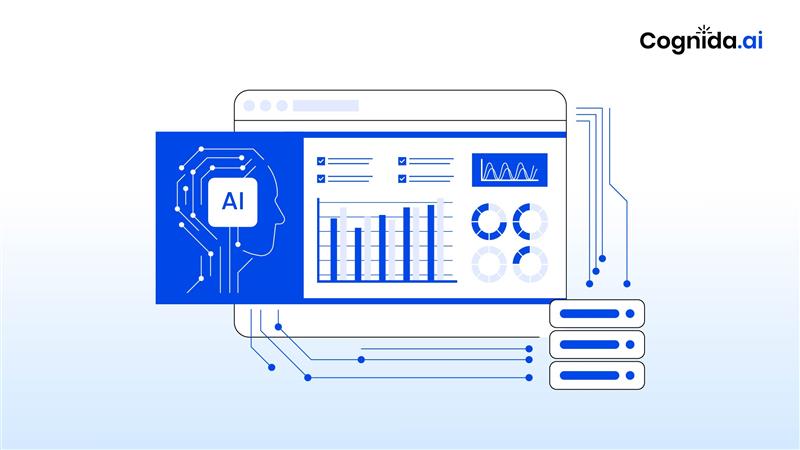Introduction
As a Data Scientist, terms like LLM, Generative AI certainly sound enticing along with their positive outcomes. However, we cannot ignore the prominence of structured data in the enterprise landscape.
Analyzing structured data offers insights and intelligence that forms a strong pillars for efficient decision-making. Insights like patterns, correlations, and trends are ever useful for business. Quantifiable insights are a cornerstone for successful digital adoption.
Several industries generate a significant amount of structured data due to the nature of their operations, interactions, and processes. This data is organized and well-defined, making it suitable for analysis and decision-making.
Why structured data will remain relevant?
In this era of generative AI, structured data analysis is going to stay. Reasons include:
- Data can be easily stored: Since 1980’s there have been several tools around RDBMS, tabular data analysis like CSV/Excel.
- Data is easy to understand: The plethora of Business Intelligence (BI) tools ensures that data is understandable at an individual and aggregated level.
- Need for Trends: Storing data in a specific format over long term enables comparison of past with present. It means organizations can understand trend and can take informed business decisions.
- Data Governance and Compliance: Structured data is easier to manage, store, and ensure compliance with regulations and data governance policies. This reduces risks associated with data handling.
- Explain-ability: Many practical Machine Learning based techniques are available which can explain the outcomes generated from model.
- Easy to augment data: Looking at data, domain SMEs can easily understand gaps in data and add more features if required.
- Quick turnaround time in analysis: The machine learning modelling experiments are faster relatively which ensures cost effectiveness and quick insights.
- Long-Term Investment: Past successes have ensured that organizations will continue to invest in managing structured data.
Industry Impact
Real Estate
Structured data comes from property, recent sales, and market trends, sales transactions, and property valuation records.
| Use Cases | Structured Data Technique |
|---|---|
| Property Valuation and Pricing considering factors such as location, property size, recent sales, and market trends. | Regression model is a good choice here which can explain well the reason of a certain evaluation. |
| Market Trends and Demand to assist assisting buyers, sellers, and investors. | Forecast model will be a great choice to take into account past patterns based on time as well taking into account external factors. |
| Targeted Marketing and Pricing Structured data analysis guides marketing efforts by identifying potential buyers' demographics, preferences, and online behavior. | Well-tuned clusters help in bringing data into manageable chunks. Each chunk can be strategized separately for best returns. |
Insurance: Structured data comes from policyholder information, claims data, risk assessments.
| Use Cases | Structured Data Technique |
|---|---|
| Predict the likelihood of future claims. It assists in setting appropriate premium rates for different policyholders. | Regression model is a good choice here which can explain well the reason of a certain evaluation. |
| Customer Segmentation: Insurers can segment customers based on risk profiles, demographics, and behavior, enabling targeted underwriting strategies and personalized pricing. | Clusters can be created from customers based on risk profiles, demographics, and behavior. This can enable targeted underwriting strategies and personalized pricing. |
| Fraud Detection Structured data analysis detects unusual patterns or anomalies in claims data, aiding in the identification of potentially fraudulent claims. | Anomaly Detection model can detect unusual patterns or anomalies in claims data. |
E-commerce and Retail: Structured data comes from online transactions, customer interactions, website activities, products, and various business operations
| Use Cases | Structured Data Technique |
|---|---|
| Churn Prediction: Identify signals indicating potential customer churn, allowing businesses to implement retention strategies. | Classification model is a good choice to understand which customers can churn within a certain period. |
| Demand Forecasting: Analyzing historical sales data helps predict future demand, enabling retailers to optimize inventory levels and reduce stockouts. | Clusters can be created from customers based on risk profiles, demographics, and behavior. This can enable targeted underwriting strategies and personalized pricing. |
| Price Elasticity: Determine how changes in price affect demand by analyzing structured sales data. | Regression model with What-if analysis can help in understanding impact. |
| Logistics Optimization to improve supply chain efficiency. | Regression model can predict delivery times and cost. |
The use cases mentioned above show the relevance of structured data analysis using common techniques like Classification, Forecasting, Regression, Anomaly Detection, and Clustering.
There are several other use cases across other industries like Finance and Banking, Healthcare & Pharmaceuticals, Manufacturing, Telecommunications, Automotive, Energy, Education and others.
Zunō.Predict helps precisely in all these cases by providing pre-built recipes which are combination of techniques around modelling and insights generation using no code.
Summary
The world is not binary, same goes for Generative AI vs. Structured Data analysis. These are different tools in accelerating data-driven decision intelligence.
When combined together, an organization’s success will be determined by harmonious mix of creativity (Generative AI) and reliability (Structured Data Analysis).
About the author
Meenu Sharma is a tech enthusiast and an experienced Data Scientist, ML Architect. She is interested in developing real-world solutions using NLP, Predictive Analytics, and Computer Vision.
